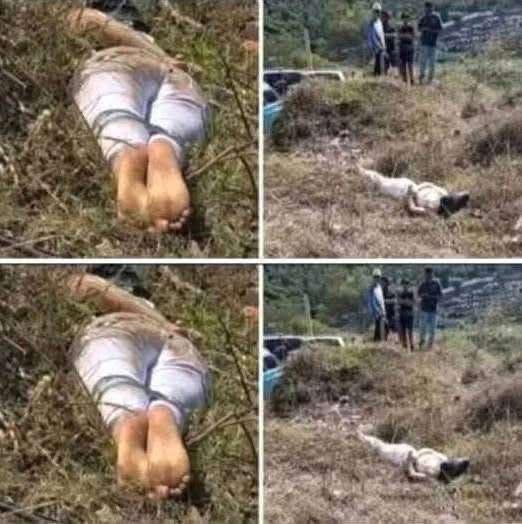Local authorities in Phnom Penh, Cambodia, recently responded to an incident that highlights not only the vulnerability of individuals in distress but also the broader challenges urban societies face in recognizing and responding to human need in fast-paced environments. The case began when a woman, believed to be around 30 years old and still unidentified, was found lying in a vacant lot near Keng Road and Win Win Boulevard in Sangkat Bak Kheng, Khan Chroy Changvar.

Witnesses reported first noticing her shortly after 11:00 a.m., and though she was in a weakened physical state, she was still conscious at the time she was discovered. According to one local resident, he had passed by the area around 5:30 a.m. but assumed the woman was resting or sleeping. Hours later, realizing that she had not moved at all, he alerted the authorities, prompting emergency responders to arrive at the scene. Medical personnel quickly assessed her condition and transported her to Prek Phon Health Center for further evaluation. Officials later noted that she appeared severely emaciated and suggested she might have been recently discharged from a hospital without adequate follow-up care or support.
Although the woman is receiving treatment, the circumstances of her situation raise questions that go beyond one isolated event, reflecting a broader social issue relevant not just in Cambodia but in many rapidly growing urban centers across Southeast Asia and the world. At first glance, this may appear to be a straightforward case of medical intervention, yet it underscores the growing challenges of urban isolation, vulnerability, and the difficulty of protecting individuals who are either unhoused, recovering from illness, or otherwise unable to secure consistent care. As urbanization accelerates, many cities face the same dilemma: people can be in plain sight yet remain unseen.
In the bustling environment of Phnom Penh, where traffic congestion, construction, and business activity dominate daily life, moments of human crisis often blend into the background noise of city life. This incident illustrates how easily those in distress may go unnoticed, even in populated areas, until someone decides to intervene. Experts in public health and urban sociology argue that the issue stems partly from the way modern urban spaces are structured. Crowded streets, rapid development, and relentless economic activity create conditions where the needs of vulnerable individuals can be overlooked.
The World Health Organization identifies social determinants of health—including housing, economic stability, and access to healthcare—as key factors in individual well-being, but when these supports are missing, individuals can quickly fall through the cracks. In this case, the woman’s physical state suggests she had been struggling for some time, yet it took hours before anyone took action to help her. That detail reveals a troubling reality: in many urban settings, the instinct to look away has become normalized. This is where the role of community compassion becomes critical. Small acts of attentiveness, such as a passerby choosing to check on someone lying motionless in public, can make the difference between life and death.
The resident who ultimately contacted authorities may have prevented the situation from worsening, reminding us that empathy in everyday interactions can have profound consequences. Advocates for urban community health stress that awareness and small interventions are essential, particularly when dealing with populations who may not be able to advocate for themselves. Whether someone is unhoused, mentally ill, or simply recovering from a serious illness, their ability to seek help can be compromised, leaving them dependent on the willingness of others to recognize their need.
This incident also shines a light on the importance of building systems that extend beyond hospitals and clinics. Discharging patients without proper support or releasing them into environments where they have no safety net increases the likelihood of them ending up in dangerous situations. Governments, NGOs, and local communities must work together to create stronger support systems—whether through shelters, follow-up health services, or social assistance programs—that ensure individuals do not simply vanish into urban anonymity once they leave institutional care.
The Phnom Penh case, though small in scale, resonates deeply because it represents both the fragility of human health and the resilience possible when compassion is present. Social media discussions following the report have reflected a mix of shock, sympathy, and calls for stronger community-based support. Some argue that such incidents happen too often in rapidly developing cities, where the drive for economic growth overshadows investment in social safety nets. Others see it as a wake-up call for individuals to take responsibility for noticing and helping those around them.
While it remains unclear what led this unidentified woman to her vulnerable state, her story serves as a mirror reflecting the urgent need for compassion and attentiveness in modern urban life. Cities thrive on energy, commerce, and constant movement, but they also risk becoming places where those in distress are left invisible until it is too late. The case reminds us that humanity’s progress should not be measured only in infrastructure or economic growth but also in the ability of communities to recognize, respond, and care for those who cannot care for themselves.





